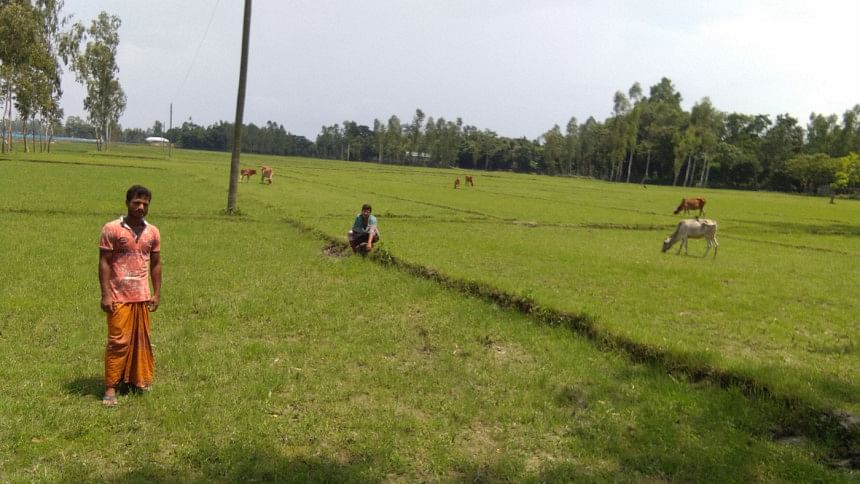Flood-hit Aman growers opt for early Robi crops

A good number of traditional Aman farmers in Kurigram are going to cultivate Robi crops early to recoup their loss caused by the recent floods.
“I grew Aman saplings on 18 decimals of land for planting those in two acres of land. But the recent flood has damaged all the seedbeds,” said Mayez Uddin, 50, of Uttar Nawabash village of Pachgachhi union under Kurigram Sadar upazila.
“As paddy saplings are not available here after the recession of floodwater I directly put seeds of BRRI-28 rice on one bigha (33 decimals) of land. I hope to get at least a moderate yield if flood does not hit again. I will cultivate pulses and mustard on the rest five bighas of land one and a half months later,” Mayez said.
Gaffaree Sardar, 23, of Sardar Para village in the same upazila said paddy saplings on his 16 decimals of seedbeds were damaged by floodwater.
“I could not prepare the seedbeds again as the water remained stagnant on the lands. Now I shall buy saplings for planting in a portion of my 13 bighas of land and cultivate pulsse and mustard early on the rest,” he said.
Jamal Uddin, 52, of Kadomtala village of Hatiya union under Ulipur upazila said, “As my Aman seedbed was damaged by flood, I am growing Aman saplings afresh on a small piece of land. I shall plant the saplings in one and a half acres of land in mid-September and cultivate early variety of pulses in another one and a half acres.”
Kurigram Department of Agriculture Extension (DAE) has set a target of Aman cultivation on 1,22,159 hectares of land this year but there is very little hope of achieving the target as floods damaged the seedbeds, officials said.
Planting of Aman seedlings will continue till mid-September, they said.
Sasty Chandra Roy, additional deputy director (Plant Protection) of the DAE, said, “A section of farmers have opted for early Robi crops as food damaged vast areas of seedbeds and there is possibility of fresh floods in September.”
“We appreciate the framers’ initiative of directly putting paddy seeds on silt or muddy lands after recession of floodwater as the yield comes at a little cost. Meanwhile, many farmers prepared new seedbeds and started planting seedlings in lands,” the official said.

 For all latest news, follow The Daily Star's Google News channel.
For all latest news, follow The Daily Star's Google News channel. 



Comments